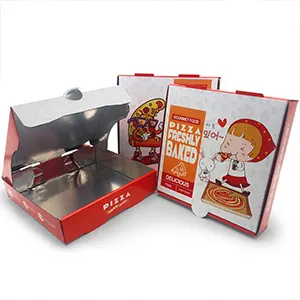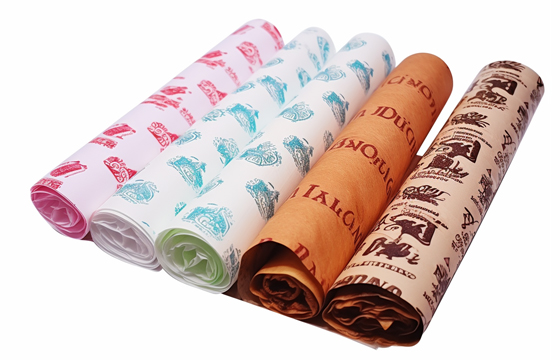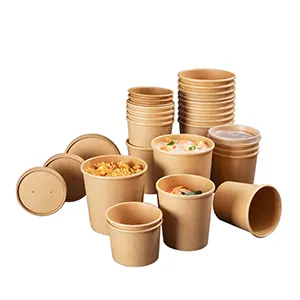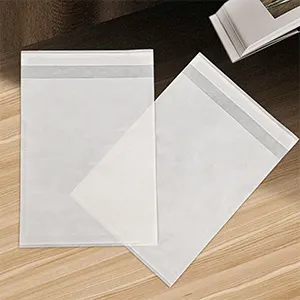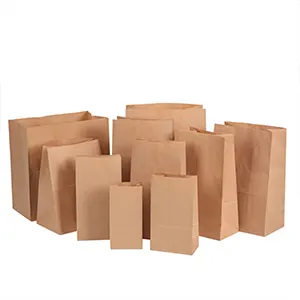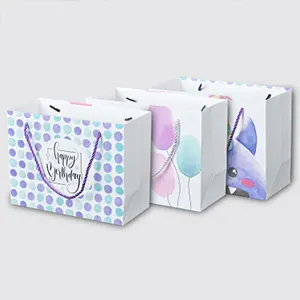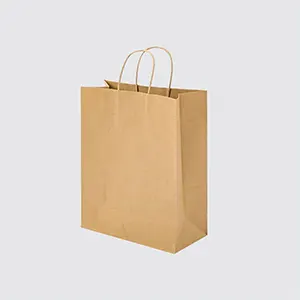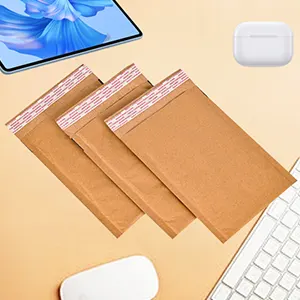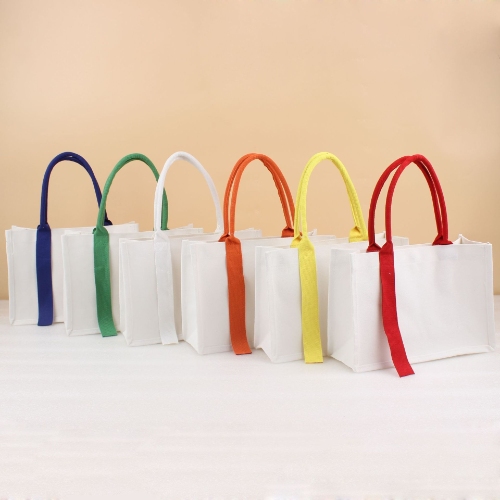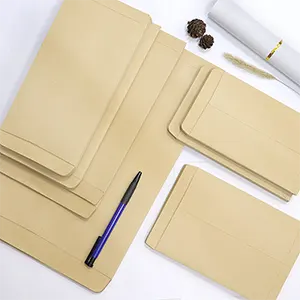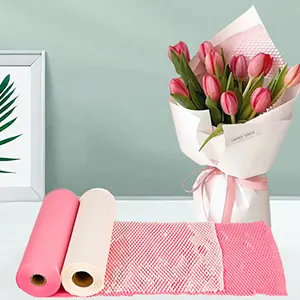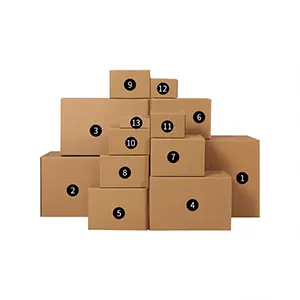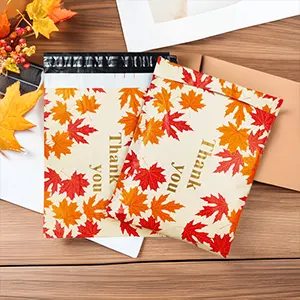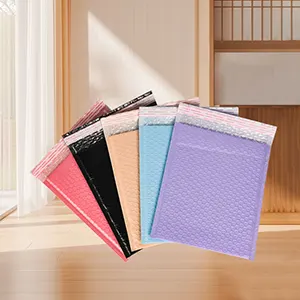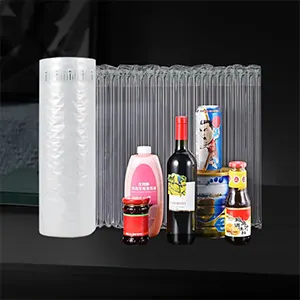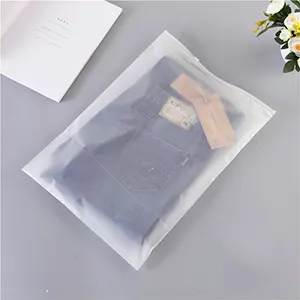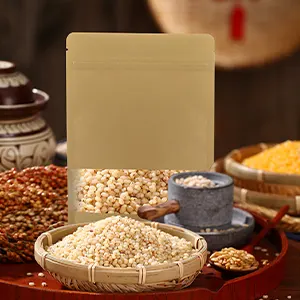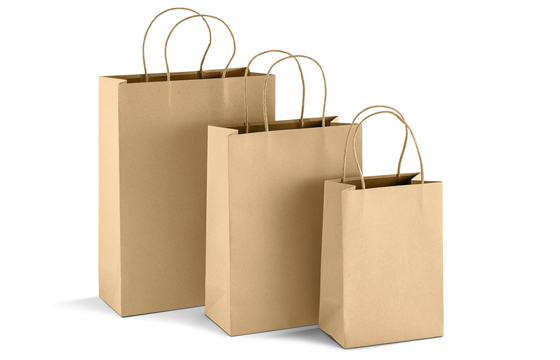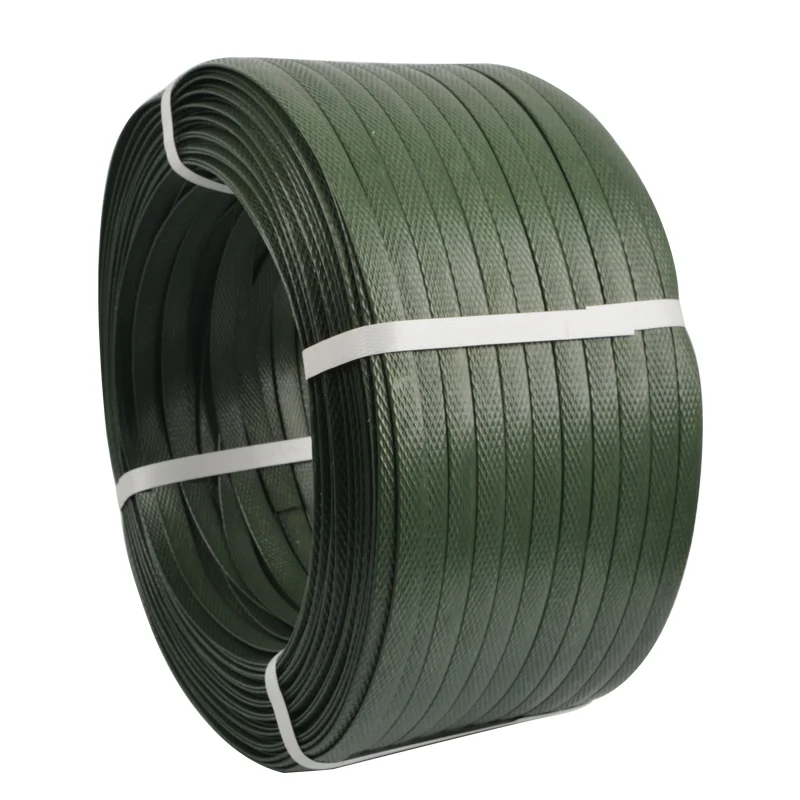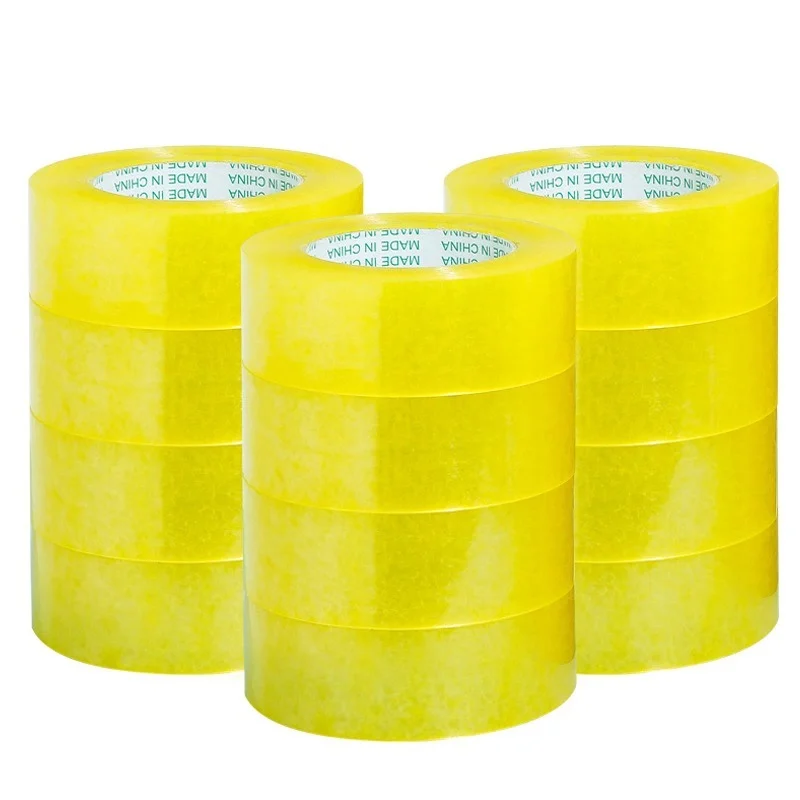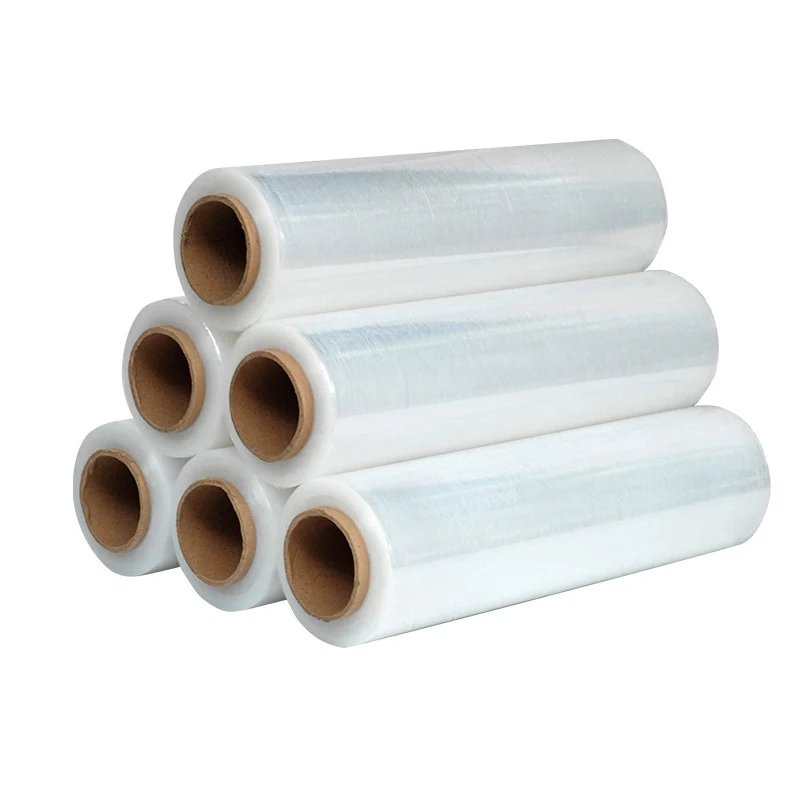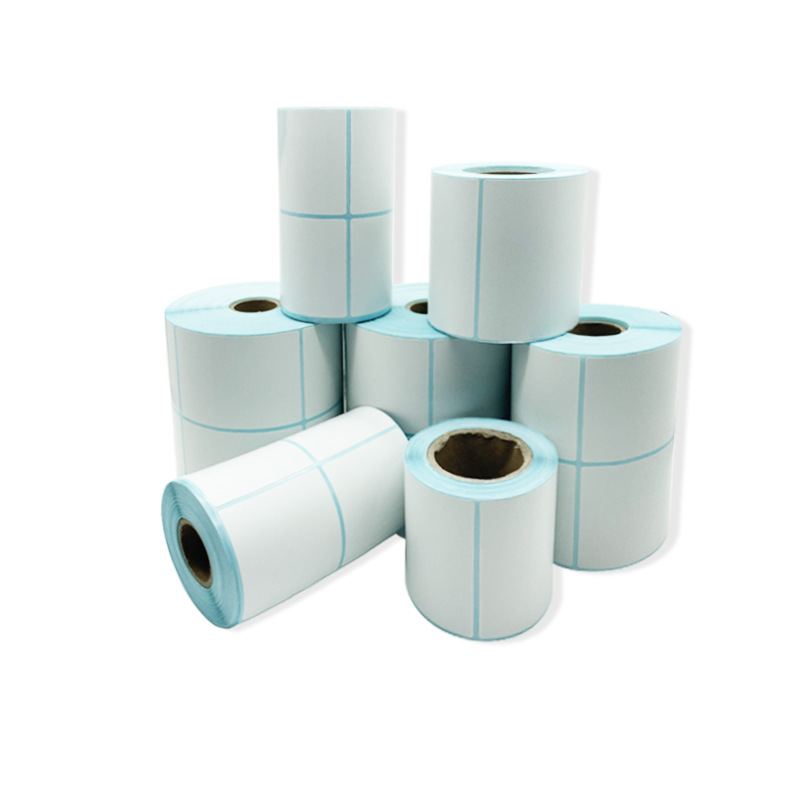Papel à prova de graxa da folha de cozimento: Hacks fáceis para padeiros caseiros
Usar papel vegetal para assadeira é um dos truques mais simples e eficazes no arsenal de qualquer padeiro doméstico. Este despretensioso grampo de cozinha é um verdadeiro cavalo de batalha multiuso, Responsável por panelas mais limpas, produtos assados mais uniformemente, e muito menos frustração. Embora seu nome sugira um único propósito, Suas aplicações vão muito além de apenas resistir à graxa. Desde fornecer uma superfície antiaderente para biscoitos delicados até permitir técnicas avançadas de cozimento, O papel à prova de graxa é o segredo para alcançar resultados profissionais consistentes com o mínimo de esforço. Este guia completo explorará os truques fáceis e as técnicas essenciais para usar papel vegetal para assadeiras, transformando-o de um simples item de despensa em sua ferramenta de panificação mais valiosa.
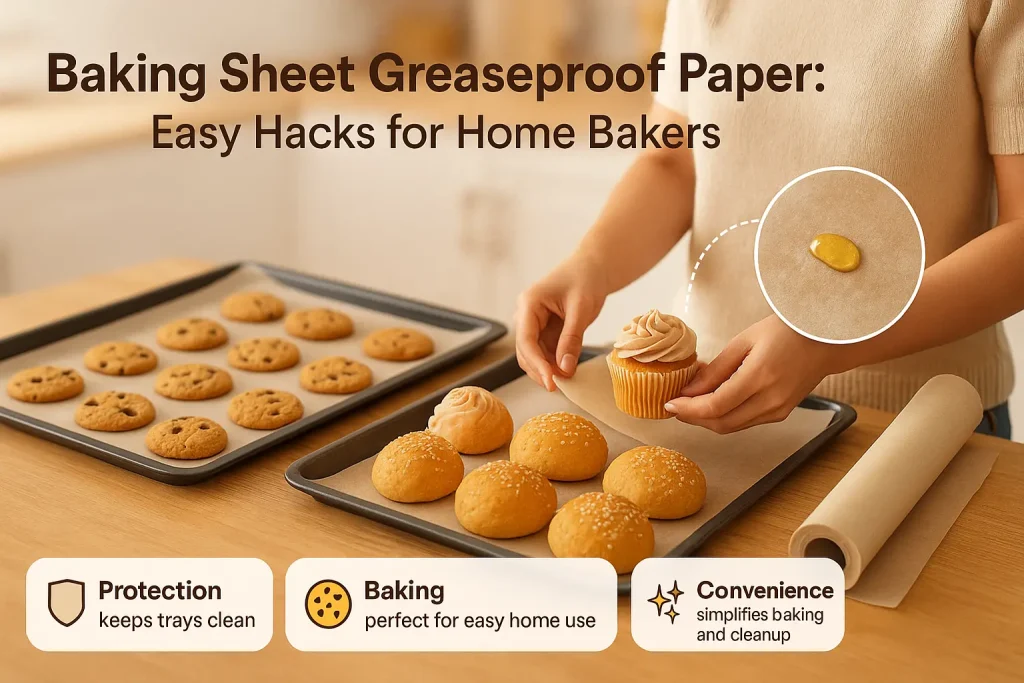
O básico: O que é papel vegetal para assadeira?
Antes de explorarmos os muitos hacks e usos, É crucial entender o que é papel vegetal para assadeira e o que o torna especial. Suas propriedades únicas são resultado de um processo de fabricação específico que o torna perfeitamente adequado para o ambiente exigente de um forno quente.
Entendendo suas propriedades resistentes à graxa
A magia do papel vegetal está em sua estrutura física, não é um revestimento químico. A polpa de papel é processada mecanicamente por um longo tempo em uma máquina chamada batedor. Esta ação, combinado com um processo chamado supercalandragem, faz com que as fibras de papel inchem e se unam em uma folha incrivelmente densa. Esta densa teia de fibras tem porosidade extremamente baixa, criando uma barreira física muito apertada para a passagem de grandes moléculas de óleo e graxa. Isso é o que evita que a manteiga dos biscoitos ou a gordura de um assado penetrem na frigideira.
A comparação mais importante: À prova de graxa vs. Pergaminho vs. Parafina
Este é o ponto de confusão mais comum para padeiros caseiros. É essencial saber a diferença para evitar um desastre de panificação. O papel à prova de graxa resiste à graxa devido à sua estrutura densa, mas não é totalmente antiaderente. O papel encerado é revestido com cera de parafina, o que o torna antiaderente, mas significa que absolutamente não pode ser usado no forno, pois a cera derrete e solta fumaça. Papel pergaminho (muitas vezes chamado de papel manteiga) é a opção premium. É revestido com uma fina camada de silicone, tornando-o altamente resistente ao calor e verdadeiramente antiaderente. Enquanto o pergaminho é superior para assados muito pegajosos ou delicados, Um papel vegetal de alta qualidade é uma escolha fantástica e econômica para a grande maioria das tarefas diárias de cozimento. Para um olhar científico mais profundo, a página da Wikipedia em Papel pergaminho oferece um bom contexto.
Por que as folhas pré-cortadas são as melhores amigas de um padeiro doméstico
Enquanto o papel à prova de graxa está disponível em rolos, As folhas pré-cortadas projetadas para assadeiras são um divisor de águas para conveniência. Estas folhas são perfeitamente dimensionadas para caber em panelas padrão de meia folha ou quarto de folha. Isso elimina a necessidade de medição e corte. Mais importante, As folhas pré-cortadas ficam perfeitamente planas na assadeira, evitando o enrolamento frustrante que sempre acontece com o papel arrancado de um rolo.
Escolhendo o tamanho certo para suas assadeiras
As assadeiras vêm em vários tamanhos padrão. Um "folha inteira" é um grande, tamanho comercial. O tamanho mais comum para fornos domésticos é o "meia folha." Há também "Quarto de folha" e até "oitava folha" Panelas. Ao comprar assadeira papel vegetal, Verifique as dimensões na embalagem para garantir que você está comprando o tamanho correto para as panelas que você usa com mais frequência.
Benefício principal 1: A solução antiaderente
O benefício mais fundamental de usar papel vegetal em uma assadeira é sua capacidade de evitar que os alimentos grudem. Esta única função é a solução para um dos problemas mais antigos e frustrantes da panificação.
A ciência da colagem (e como o papel o impede)
A comida gruda em uma panela quando proteínas e açúcares formam uma ligação química com a superfície do metal quente. Uma camada de papel vegetal atua como uma barreira física. Evita que o alimento entre em contato direto com o metal. Embora o papel em si não seja completamente antiaderente como o silicone, sua propriedade resistente à graxa é fundamental. Para a maioria dos produtos de panificação, A gordura dentro da receita (como manteiga em biscoitos) é bloqueado pelo papel e se acumula ao redor da base do item, essencialmente fritando um pouco e permitindo que ele se solte facilmente.
Para Cookies: Garantindo uma liberação limpa
Este é o caso de uso clássico. Colocar uma folha de papel vegetal em uma assadeira é a maneira garantida de garantir que seus biscoitos perfeitamente assados deslizem imediatamente. Isso evita a tragédia de ter o fundo de seus biscoitos grudados na assadeira, forçando você a cinzelá-los em pedaços quebrados. Isso também significa que você não precisa untar muito sua panela, o que pode fazer com que os cookies se espalhem demais.
Para pães e scones: Evitando um fundo preso
Pães artesanais de forma livre, Scones, e biscoitos assados diretamente em uma assadeira às vezes podem grudar, especialmente se a massa estiver do lado mais úmido. Uma folha de papel vegetal fornece uma superfície segura e confiável que garante uma liberação limpa. Também ajuda na transferência do delicado, massa fermentada para a frigideira quente sem esvaziá-la.
Quando você ainda precisa untar o papel
É importante lembrar que o papel vegetal é resistente à gordura, não é verdadeiramente antiaderente. Para a maioria das receitas com uma quantidade razoável de gordura, o artigo será suficiente por si só. Contudo, para receitas com muito baixo teor de gordura, como certos merengues ou bolos sem gordura, É uma boa prática untar levemente o próprio papel vegetal com um pouco de manteiga ou spray de óleo. Isso fornecerá uma camada extra de seguro contra aderência.
Benefício principal 2: O truque de limpeza
Além de melhorar os resultados de panificação, O benefício mais amado de assadeira papel vegetal é sua capacidade de tornar a limpeza incrivelmente rápida e fácil. É um truque simples que pode economizar muito tempo e esforço esfregando panelas.
Protegendo suas assadeiras de bagunça assada
Uma assadeira nua é um ímã para bagunça assada. Açúcar caramelizado, gordura fundida, e gotejamentos queimados podem se soldar à superfície do metal, exigindo um longo banho e muita graxa de cotovelo para remover. Forrando a assadeira com papel vegetal, você cria uma barreira descartável. O jornal pega toda essa bagunça, Manter suas assadeiras com aparência de novas por muito mais tempo.
Para assar: Captura de óleos e caramelização
Quando você assa legumes ou um pedaço de carne, O calor alto cria uma bela caramelização. Também faz com que óleos e gorduras se transformem e respinguem. Estes podem assar na assadeira, criando um, camada preta que é muito difícil de limpar. Uma folha de papel vegetal vai pegar tudo isso. Depois de assar, você pode simplesmente levantar o papel (e toda a bagunça) e jogá-lo fora, deixando a panela embaixo quase perfeitamente limpa.
Para bolos com coberturas: Pegando gotejamentos e derramamentos
Para receitas como rolinhos de canela com cobertura açucarada, ou um pão com cobertura de queijo, gotejamentos são inevitáveis. Essas gotas açucaradas ou extravagantes atingirão a panela quente e queimarão quase instantaneamente. Um forro de papel vegetal contém esses derramamentos. Isso evita que eles queimem em sua panela e encham sua cozinha de fumaça.
A alegria de uma simples limpeza vs. Imersão e Esfregar
O tempo e a energia economizados na limpeza são um grande benefício. Uma tarefa que poderia ter envolvido 15 Minutos de imersão e esfregar uma panela suja são transformados em uma tarefa de 15 segundos de limpar a panela com um pano úmido. Em uma casa ocupada, Essa conveniência é uma grande melhoria na qualidade de vida. Em um ambiente comercial, Essa economia de tempo se traduz diretamente em economia de custos de mão de obra, por isso é essencial para catering com folhas de papel vegetal.
Benefício principal 3: O segredo para assar uniformemente
Um benefício menos óbvio, mas igualmente importante, do uso de papel vegetal para assadeiras é sua capacidade de promover um cozimento mais uniforme. Ele atua como um amortecedor entre a comida e o calor intenso da panela de metal, Resolvendo vários problemas comuns de panificação.
Como o papel isola do metal quente
Uma assadeira de metal é um condutor de calor muito eficiente. Isso é ótimo para cozinhar, mas às vezes pode ser muito agressivo. O contato direto com o metal quente pode fazer com que o fundo de um produto assado cozinhe muito mais rápido do que o topo. A camada de papel vegetal atua como um leve isolante. Ele modera a transferência de calor da panela para os alimentos, permitindo que o fundo cozinhe de forma mais suave e uniforme.
Prevenção de fundos queimados em biscoitos e bolos
Este efeito isolante é o segredo para evitar fundos queimados. Este é um problema muito comum, especialmente com biscoitos, Shortbread, e bolos assados em panelas de metal escuro. A barreira de papel retarda o escurecimento do fundo, dando ao resto do item tempo suficiente para cozinhar perfeitamente. O resultado é um belo uniforme, Acabamento marrom-dourado de cima para baixo.
A diferença entre usar folhas de papel branco à prova de graxa e folhas marrons
A cor do papel também pode ter um pequeno efeito. Brilhante, folhas de papel à prova de graxa branca refletirá mais calor do que o papel pardo não branqueado. Isso significa que um lençol branco proporcionará um efeito isolante um pouco maior e pode ser uma escolha melhor para assados muito delicados que tendem a queimar no fundo. Para a maioria das receitas, contudo, a diferença é muito sutil.
Truques e técnicas de cozimento do dia a dia
Uma simples folha de papel vegetal é uma das ferramentas mais versáteis que você pode ter. Além de apenas forrar uma panela, Ele pode ser usado para uma ampla variedade de truques inteligentes que tornam todo o processo de cozimento mais fácil e limpo.
Aqui estão alguns dos melhores truques para padeiros caseiros:
- Crie uma superfície de trabalho descartável: Coloque uma folha grande em seu balcão para uma superfície antiaderente e fácil de limpar para amassar massa ou outras tarefas bagunçadas.
- Abra a massa entre duas folhas: Este é o truque definitivo para estender biscoitos pegajosos ou massa de pastelaria. Evita que a massa grude no rolo sem a necessidade de excesso de farinha.
- Crie um saco de confeitar improvisado: Um triângulo de papel pode ser enrolado em um cone para criar um saco de confeitar descartável para glacê ou chocolate derretido.
- Faça um "Cartucho" Membro: Um círculo de papel vegetal colocado em cima de um ensopado ou molho fervente retarda a evaporação e mantém os alimentos úmidos.
- Use como um funil: Enrole um pequeno pedaço de papel em um cone para criar um funil prático para transferir ingredientes secos, como granulado ou especiarias, sem derramar.
Além da assadeira: Outros usos do forno
A utilidade do papel vegetal no forno vai muito além de uma simples assadeira plana. É uma ferramenta essencial para preparar uma grande variedade de formas e formas de bolo para garantir um perfeito, resultado sem aderência.
Forrar formas de bolo para uma liberação perfeita
Forrar uma forma de bolo é a maneira garantida de evitar que seu bolo fique preso. Você pode traçar o fundo da lata no papel e cortar um círculo perfeito. Uma tira longa pode então ser usada para forrar os lados. Isso garante que todo o bolo, Da parte inferior para os lados delicados, vai liberar de forma limpa da panela todas as vezes.
Forro de formas de pão e bandejas de brownie
Para panelas quadradas ou retangulares, como aqueles usados para brownies ou bolos de pão, um "estilingue" é a melhor técnica. Um longo pedaço de papel é cortado para caber no fundo da panela, com excesso suficiente para subir e passar pelos dois lados longos. Essas abas em excesso atuam como alças, permitindo que você simplesmente retire todo o produto assado da assadeira para facilitar o corte e o serviço.
Criar "em Papillote" Bolsas para refeições saudáveis
O papel à prova de graxa é perfeito para o "Em papillote" Método de cozimento. Isso envolve selar ingredientes como peixe e vegetais dentro de uma bolsa de papel dobrada e assá-la. A comida cozinha em seus próprios sucos, criando uma refeição incrivelmente saborosa e saudável praticamente sem limpeza.
Usando uma folha inteira de papel vegetal para projetos maiores
Para projetos de panificação muito grandes ou para forrar panelas comerciais superdimensionadas, usando um folha completa de papel vegetal é a opção mais eficiente. Isso fornece um grande, superfície sem costura que pode ser cortada em qualquer tamanho necessário, tornando-o um produto muito versátil para padeiros caseiros ambiciosos ou pequenas empresas de alimentos.
Solução de problemas e perguntas comuns
Mesmo com uma ferramenta simples como papel vegetal, dúvidas e pequenos problemas podem surgir. Aqui estão as respostas para alguns dos problemas mais comuns.
"Por que meu papel está enrolando?"
O papel que está em um rolo desenvolve um forte "memória" e quer se enrolar. A solução mais fácil é o "amassar" cortar. Rasgue sua folha, amasse em uma bola apertada, e depois alisá-lo de volta. Isso quebrará a memória do papel e permitirá que ele fique plano na panela.
"Posso reutilizar uma folha de papel vegetal?"
Isso depende do que você assou nele. Se você assou um lote de biscoitos simples e o papel ainda está relativamente limpo e não está escuro ou quebradiço, muitas vezes você pode reutilizá-lo para outro lote. Contudo, se o papel estiver muito sujo de graxa ou se tornar escuro e quebradiço com o calor, deve ser descartado.
"Qual é a temperatura mais alta que posso usar?"
Verifique sempre a recomendação do fabricante na embalagem. A maioria dos papéis à prova de graxa é segura até cerca de 200-220 ° C (400-425°F). Não o use para aplicações que requerem calor extremamente alto, como sob um frango.
Considerações Finais
O papel vegetal da assadeira é um simples, acessível, e ferramenta profundamente eficaz que pertence à cozinha de todo padeiro. É um verdadeiro solucionador de problemas, Oferecendo um truque simples para três dos maiores desafios da panificação: Furar, cozimento irregular, e limpeza bagunçada. Sua versatilidade vai muito além de um simples forro, servindo como uma ferramenta valiosa em todas as etapas do processo de panificação, Da preparação à apresentação. Tornando este humilde papel uma parte padrão de sua rotina, você pode economizar tempo, Reduza a frustração, e obtenha resultados mais deliciosos e bonitos em todas as suas aventuras de cozimento. É a base de todos os grandes folhas de papel à prova de gordura para assar.
A JERL tem trabalhado duro no caminho das embalagens personalizadas. Da próxima vez, quando você sentir a necessidade de impressionar alguém com sua marca, pense na JERL Packaging!

